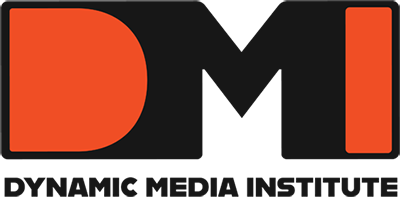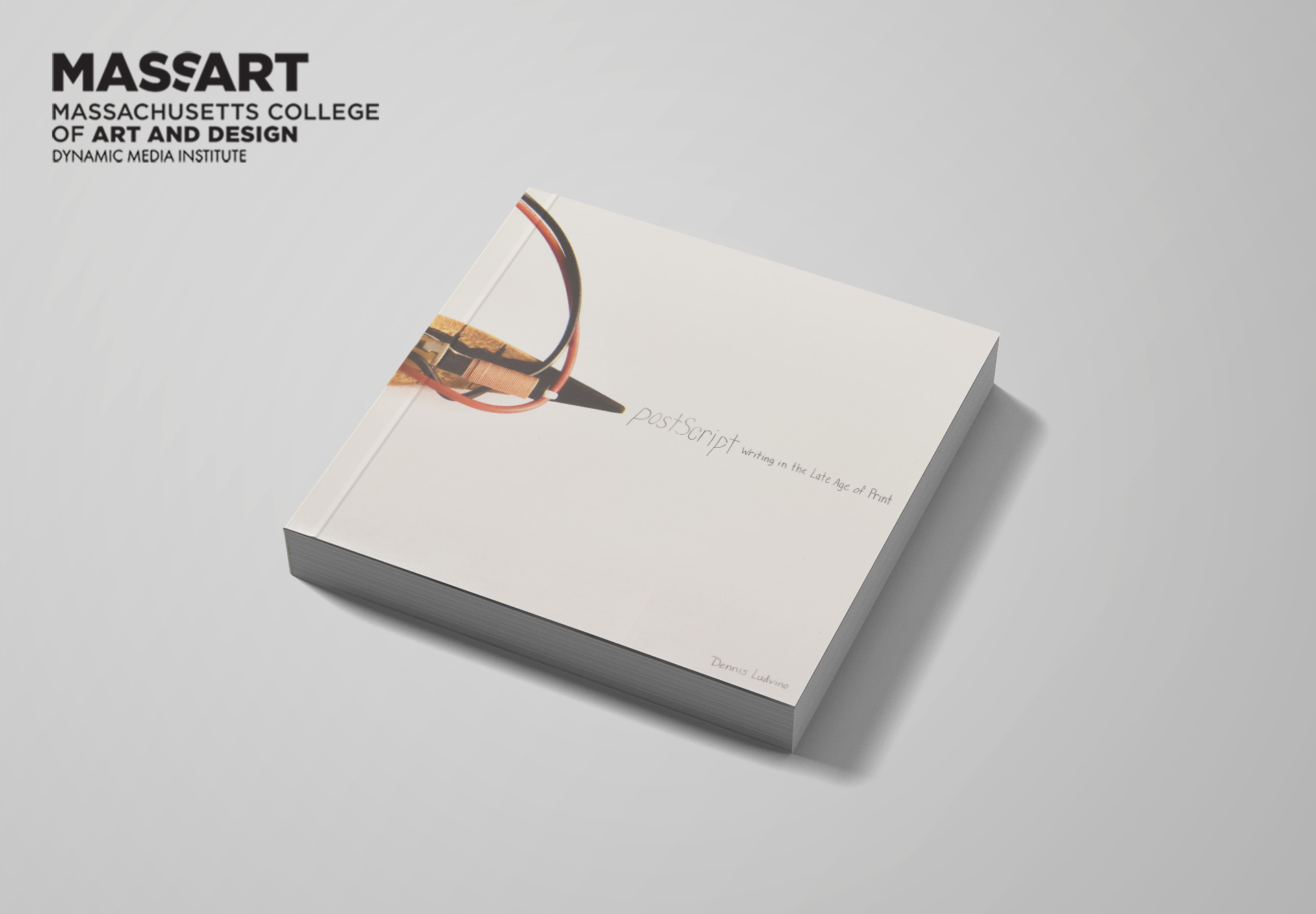Dennis Ludvino, MFA ’10
thesis abstract
My thesis is an exploration in new digital writing and mark-making environments. Looking at physical surfaces such as bathroom walls and their virtual counterparts like Instant Messaging and Text Messaging, my work straddles two worlds: The virtual and the physical. By conducting a series of experiments studying written forms, multimedia environments, and collaborative writing surfaces, I will expand our definition of the writing space and uncover new methods of communicating.
In Orality and Literacy, a seminal text exploring the differences of oral and literate cultures, Walter Ong wrote, “[Writing] initiated what print and computers only continue, the reduction of dynamic sound to quiescent space, the separation of the word from the living present, where alone spoken words can exist.” When first written in 1982, on the cusp of the personal computer and many years before the Internet became a cultural staple, this statement was inarguable. Almost thirty years later, however, we have witnessed an emergence of digital technologies that has reshaped our writing environments. The inactive print surface, a characteristic of writing for thousands of years, has suddenly come to life on the computer screen.
The story of writing is marked by many transformations: From cave wall to clay tablets or pen to linotype. None, however, have had such a dramatic impact as the refashioning of communication through digital writing environments. The digital surface provides an immediate connection to networks of other users. Chat rooms, texting, and instant messaging have blurred the lines between written and oral communication. Websites like Twitter and Facebook keep us connected with millions of other users at all times. Experimental installations like Mark Hansen and Ben Rubin’s Listening Post illustrate the potential for an emergence of algorithmic or collective writing. While these examples highlight the vast potential for virtual writing, the rigid structure and constraints of the digital world can significantly decrease the writer’s role and control over the writing surface.
Comparing a digital space such as Twitter to an analog space like the writing found on bathroom walls, the difference is striking. While the sheer volume and constant presence of users on Twitter is impressive, when we look at the expressive qualities of bathroom wall writing the division is clear. The digital environment is a controlled and structured space. For the most part programmers decide how and where the writing appears. Writers on a bathroom wall, however, are free to make marks: they can draw, write, cross out and edit other writing, use scale, and change colors. There are no rules and no restrictions.
There is no question that the printed word is in a period of decline. Reading and writing on digital devices becomes more commonplace each day and the craft of penmanship is moving into the realm of the letterpress and other obsolete printing technologies. My thesis is a series of experiments studying the various qualities of the virtual word and its future within our culture. I am also interested in examining the space on which we write and its influence on the writing experience. Many scholars and authors will argue that handwriting is dead, however, my thesis illustrates that there is life after print–and it is fascinating.
Thesis Introduction
“Writing is the painting of the voice.” –Voltaire
My interest in writing started with essays on Shakespeare, the modernists, and the mythical qualities of Robert Penn Warren’s Audubon: A Vision. Then I began emulating the stories of Raymond Carver and Anton Chekhov. Everyday I wrote something new in my notebook and before long I completed a few stories. A joined a group of writers that met regularly for critiques. After months of sharing our stories and poems, we decided to create a literary magazine–a home for unpublished writers like ourselves. I found myself immediately engrossed in the visual qualities of the publication and the synthesis between graphic design and written communication. The path that started with writing has extended into the exploration of digital media–its new writing tools and spaces–and its influence on written communication.
Recently, I was reading a review for a hi-tech pen that records handwriting and was struck by one of the reviewer’s remarks: “This doesn’t offer anything enticing or groundbreaking for people who don’t use a pen and paper on a regular basis.” People who don’t use a pen and paper on a regular basis? My first reaction was to cast this aside as the naïve ramblings of an overly zealous tech-enthusiast. Then I realized that I was reading the review on a computer screen and, in fact, I don’t even use a pen and paper on a regular basis. I may scratch a few quick notes or make a couple of comments in my sketchbook, but any significant writing is done on my computer. When did this happen?
Written communication is in the throws of a tipping point and, if history repeats itself, it won’t be long before the pen and paper are left behind with the ranks of numerous other obsolete writing tools. The screen is our surface, the pixel our ink, and keyboard and mouse our pen. In her essay From Pencils to Pixels: The Stages of Literacy Technologies, Denise Baron writes, “…we often lose sight of writing as a technology, until, that is, a new technology like the computer comes along and we are thrown into excitement and confusion as we try it on, try it out, reject it, and then adapt it to our lives–and of course, adapt our lives to it” (Baron 37). When a new writing technology appears (or any new technology for that matter), as Ms. Baron points out, there is a transitional phase where the two technologies are used in conjunction. Jay David Bolter refers to this period as the late age of print. My thesis lies somewhere in the middle of this transition. Sandwiched between the digital methods of the future and the handwritten marks of our past.
Over the course of its long history, numerous technological advances have influenced writing. The heavy clay and stone tablets gave way to the more convenient papyrus rolls. Etching tools became pen and ink and eventually the metal castes of the letterpress. More recently, however, new digital tools and writing spaces are altering our relationship with written communication.
Technological advancements in the realm of computing, networks, and the availability of high speed internet connections paved the way for new virtual writing to usurp our handwritten past. New digital writing environments like Twitter, Instant Messaging, and Facebook have ushered us into a new era of immediacy. Time and geographic location are now inconsequential to written communication (so long as there is a computer and internet connection). Despite the positive gains from these new technologies, overly structured digital environments have become barriers separating the writer and the writing space.
One of my studio projects at DMI catalogs the writing found on bathroom walls. Bathroom wall writing provides an interesting counterpoint to digital spaces. While both provide a surface for communication, the writing qualities of both are vastly different. The bathroom wall is an expressive and free environment. An author can write, draw, edit other work, or simply scratch out something they don’t like. Different writing implements, sizes, and writing styles create a colorful unique space. Writers have a direct connection to the space: The hand creates a mark and its movement defines the spaces.
Current digital writing spaces, on the other hand, are programmed for uniform communication. For instance, an author of a Twitter post has no control over the physical characteristics of the communication or the space in which it is written. When a message is sent, its physical properties and placement are beyond an author’s scope of control. Our influence and connection to writing surfaces has disappeared. The uniformity of typographic forms, for instance, has removed all traces of the unique humanistic qualities of handwritten letterforms. Our fingers type a message, but programmers and designers decide what to do with it.
Over the last couple of years at DMI, I have worked on numerous projects involving writing, mark making, and experimental digital writing spaces. To help organize the work and enhance my explanation of the digital word, my thesis is divided into three sections: virtual, processed, and networked. While there are other properties represented in virtual writing, these three mark the core differences between digital and physical mark-making.
Beyond surveying the potential uses of collaborative writing environments, my thesis is an extension of my interest as a writer. Each project provided an opportunity to look at writing from a different angle and uncover new questions. Some are simple programs designed to see how other media elements affect the writing space. Others offer in-depth studies into the nature of collaborative writing spaces and how multiple-authored environments affect communication. While some of my case studies are more successful than others, all of them, when viewed together, show different pieces of the complicated world of digital communication.
In my thesis writing, I intentionally blend two distinct writing formats: narratives and case studies. The narratives illustrate my design process, my relationship to reading and writing, and how that relationship grew into a thesis. The novelist Richard Ford once said that the secondary characters in his novels were there so that the main characters could cast their shadows. Hopefully the narrative sections provide a space for the case studies to cast their shadows–to provide a deeper understanding of my projects and how they relate to me.
Download “postscript: Writing in the Late Age of Print” (PDF, 18 MB).


